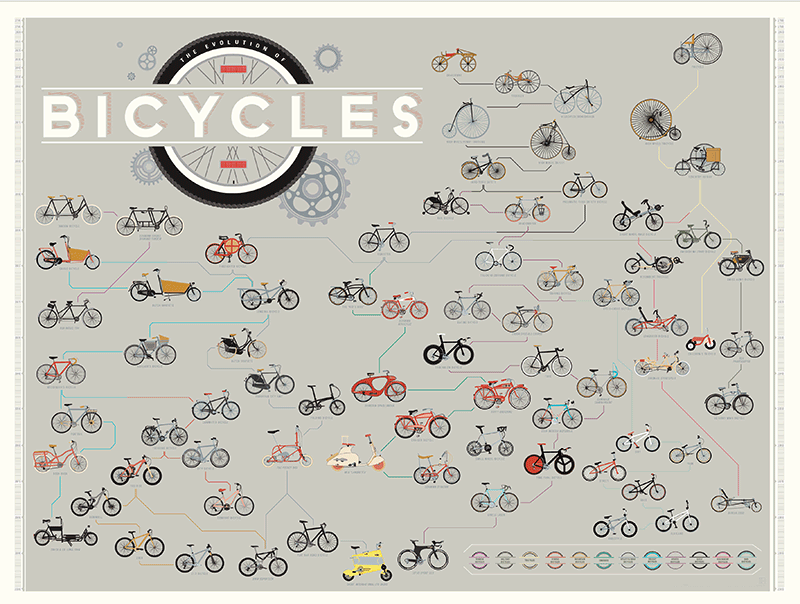We were looking at this Evolution of Bicycles poster the other day when we came across the Dandy Horse — aka: Draisine (German), Velocipede (French), or Dandy Horse (British). The story it is pretty dramatic, we had to share…
Turns out that the “horse” part of the name is not just metaphorical, it actually was a replacement for horses - and for a dark reason.
So there was this Volcano….yes, stay with us, a volcano in Indonesia that erupted in 1815. REALLY erupted, like nuclear-explosion-BOOM erupted; It's still the largest Volcano eruption in 1300 years. Besides the obvious destruction in the area, effects were global. In the Northern Hemisphere it caused the “volcanic winter” of 1816; there was snow and frost in summer, red and brown snow in winter, heavy rains, yellow sunsets nearly every day, and a relentless cloud of ash. Naturally, it did a number on agriculture and the set off a chain reaction of failed crops, food shortages, starving livestock, and starving people.
Germany was especially hard-hit at the time. Enter our inventor, Baron Karl von Drais. The story goes that he got to thinking about the necessity of horses in light of the grave situation of the horse population; horses dying of starvation, being poached for food or stolen. Think about it- no cars, no bikes, no horses?! His invention didn’t have any pedals and it was smaller and lower to the ground than a bicycle because the rider had to propel it with their feet on the ground (a little Fred Flintstone meets balance bike). He named it the “Laufmasshine” (translation: running machine). Then the Brits named it the Dandy Horse after it became a sensation among the young male aristocracy (in the British Regency era these men were called Dandies-at the time it was a term synonymous with masculinity — not the late 19th century/early 20th century meaning).
Illustration of Karl von Drais riding his" Laufmasshine" (aka Dandy Horse)
The Dandy Horse was short lived, thankfully the food situation got better and the horse population too by about 1820. It would be another 40 years before anything resembling a bicycle reappeared.
It should be noted that the whether the facts about Baron Karl’s own horses and the source of inspiration for the invention is somewhat speculative, but is detailed in a well-researched book by Hans-Erhard Lessing, titled "Karl Drais: Zwei Rader statt vier Hufe" - only available in German though.



